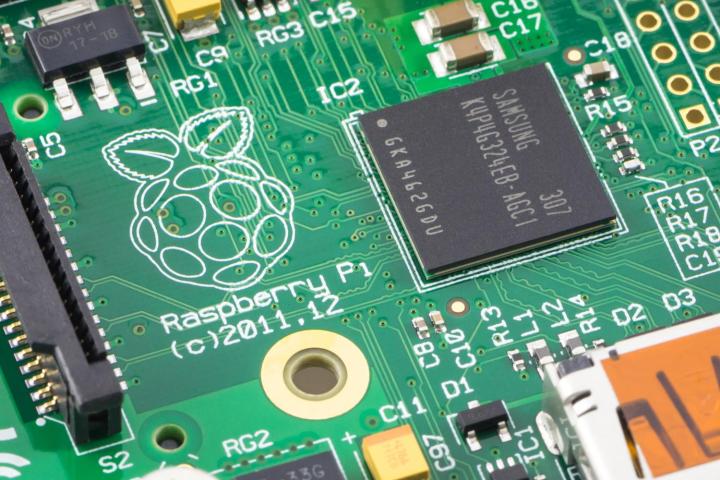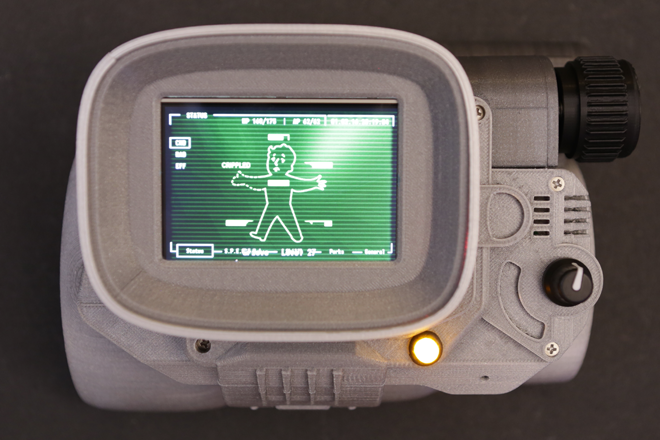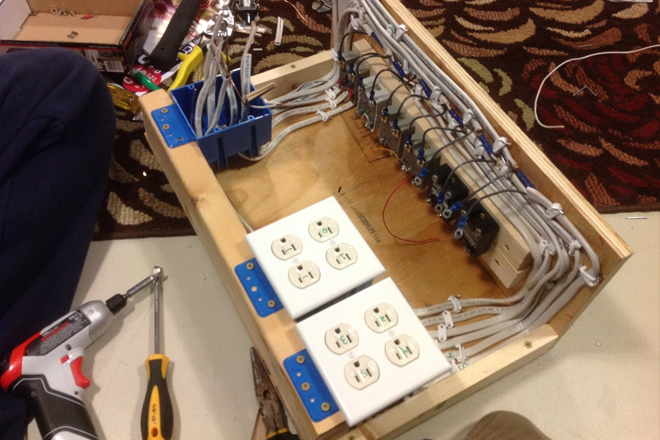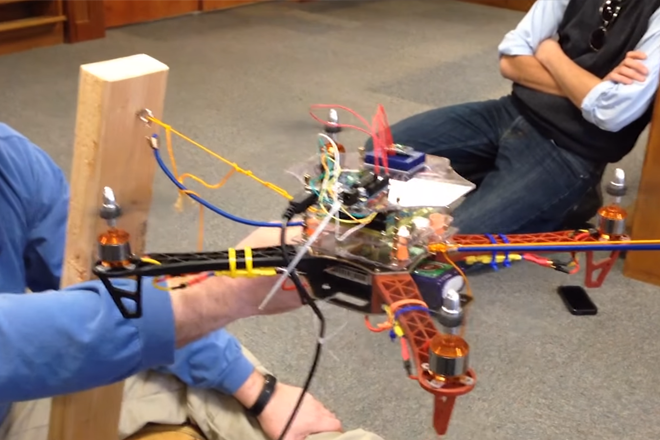
Game Boy Zero

Creating a retro game machine with a Raspberry Pi isn’t a new idea, but the sheer level of detail put into this iteration is extremely impressive. Creator Warner Skoch started with an original Game Boy, one of the old AA-powered models, and turned it into an emulator stuffed to the gills with ROMs. The upgrade includes a full color LCD screen, extra buttons for X/Y and R/L controls, and a rechargeable battery, Bluetooth, and (best of all) the ability to emulate games all the way up to the original PlayStation. Full instructions and materials have been posted to a dedicated blog.
Snack-Sized Macintosh
Speaking of iconic electronics, there are few personal computers more iconic than the original Macintosh. With a Raspberry Pi, an emulated operating system, and no small amount of crafting, John Leake created the “Mini Mac.” It’s a 1/3rd scale mode Macintosh, complete with a tiny LCD screen and USB ports for actually using it. If you get too tired of reading the tiny text, it also includes an HDMI port for use with a full-sized monitor or television.
Fallout Pip-Boy
So much for replicating real technology – this project takes something that’s fiction and brings it into reality. The Pip-Boy is the iconic wrist-mounted computer of the Fallout video game series – think of it as an Apple Watch with tiny vacuum tubes and a built-in Geiger counter. An Adafruit user combined a Raspberry Pi, various off-the-shelf electronics, and a custom 3D-printed housing to make a real version of the Fallout wearable. A handy build guide, including 3D printing resources, is posted on the web.
Dedicated Minecraft machine
Speaking of video games, it’s more than possible to run the mega-popular Minecraft on a low-power Raspberry Pi. An open source version of both the game client and the server is available, making it easy to create a dedicated machine for playing or serving up the LEGO-like world of Minecraft. You can run it on any Pi hardware, but why not make a make a custom housing and add some glowing red LED to form a dedicated lava brick?
PiPhone
The Raspberry Pi isn’t exactly sleek, but that hasn’t stopped at least one modder from using it to create one of the modern world’s most important electronic devices: a cell phone. Adding a battery, an LCD touchscreen, and a cellular radio, not to mention a good bit of custom programming, has turned the Pi into a “PiPhone.” It’s not going to win any design awards, but it’s an impressive achievement for creator David Hunt nonetheless.
Christmas light controller
The Raspberry Pi is already fairly festive, but injecting a little holiday cheer into it can’t hurt. One modder hooked up his elaborate Christmas light display to one of the tiny computers, then connected an audio system as well. The result is a system that pairs the lights with a MIDI song for a synchronized light show. The system is open source, and it’s been adapted to full MP3 audio. Aside from the elaborate light setup and outdoor speakers, the hardware required is surprisingly minimal. If you’re already a holiday light buff, this could add some much-needed spice to your display.
Smart mirror
One enterprising modder added a Raspberry Pi and some strategically placed LCD screens to a transparent mirror to create a something straight out of a science fiction television set. The integrated screens can display personalized messages, a clock, and even the upcoming weather while still working as a standard reflective mirror. His build process is detailed on his website for others to emulate.
Car-puter
Most modern cars have some sophisticated computers controlling their media and menu functions, but if you want some neat features for your old clunker, a Raspberry Pi might do the trick. That’s just what a British modder did with a tiny Pi and a Bluetooth connection to his car’s on-board diagnostics (OBD) port. The replacement computer displays the car’s speedometer, RPM, and even maintenance information. It’s also displayed in an impressive custom mount underneath the dashboard.
Flying hunter-bot
OK, this project isn’t actually a Terminator. But with a Raspberry Pi that’s mounted onto a customized quad-copter that both flies itself and scans the room to track targets, it might as well be. The idea behind “Project Unknown” is to build a flying robot that can identify disaster victims for search and rescue, which is a little more comforting than it might otherwise be. The project started on an Arduino board before graduating to a Raspberry Pi 2, and all the code is available on GitHub.
Virtual rhinoceros
This use of a Raspberry Pi is more of an art project than anything else, but that makes it even more impressive. “Erica the Rhino” is a University of Southampton project that stuffs a life-sized rhinoceros with all kinds of electronics. Some of the Raspberry Pi units inside are connected to motorized ears and eyes, lights and speakers that react to visitors, while others broadcast Wi-Fi signals and allows interactions with humans via Twitter. Erica now lives in the Mountbatten Building in Highfield, England.











